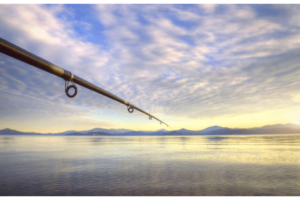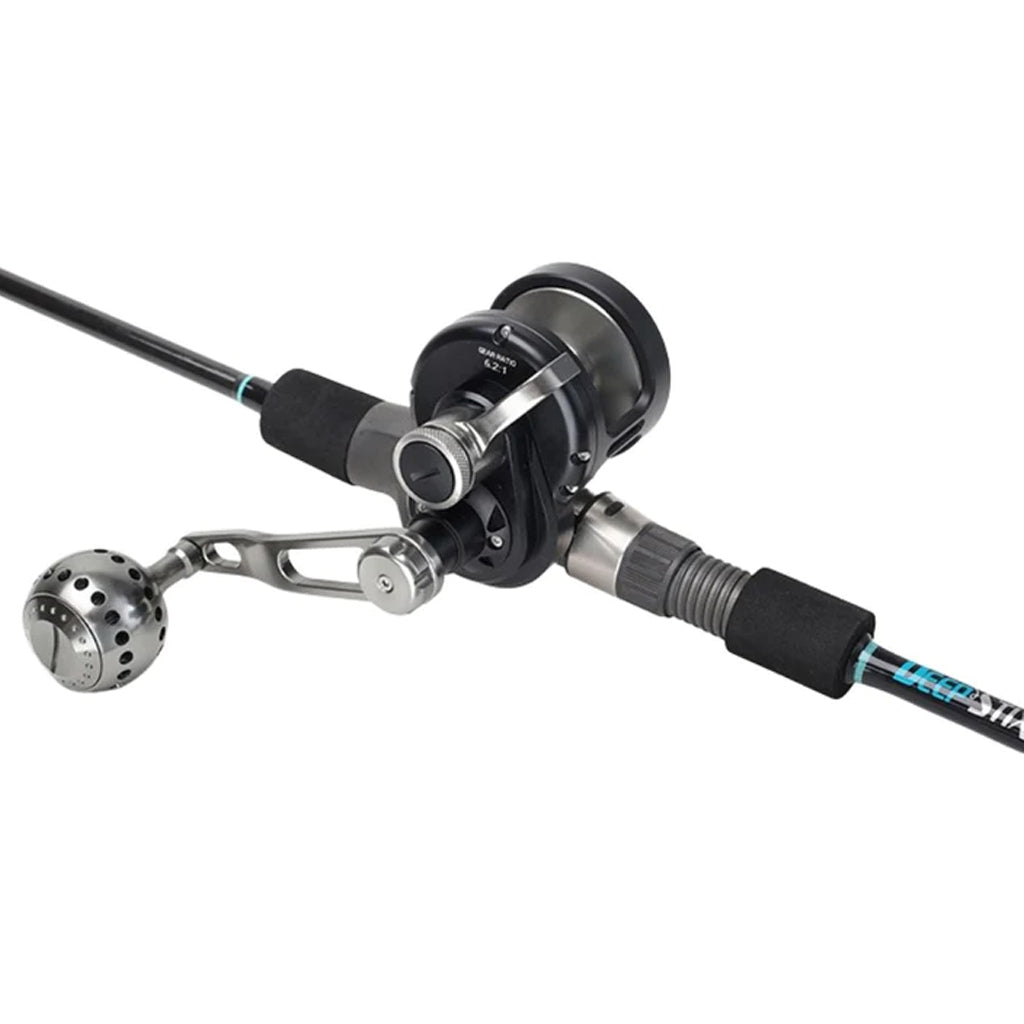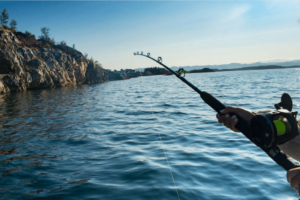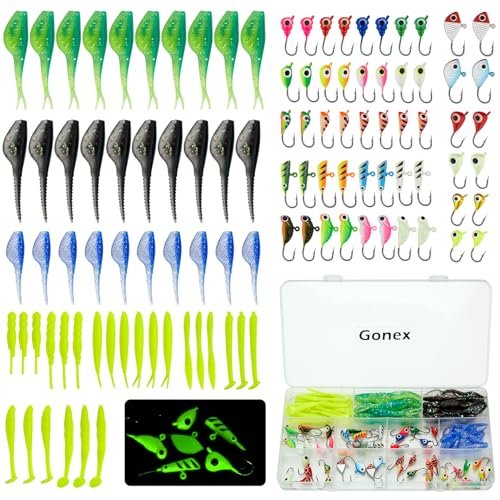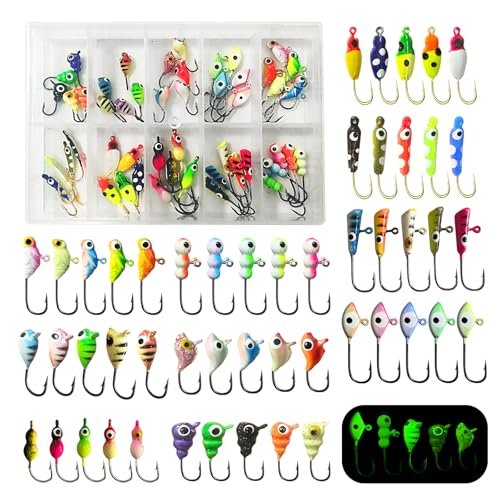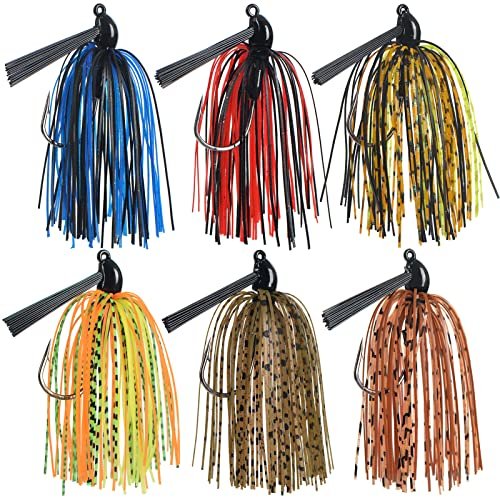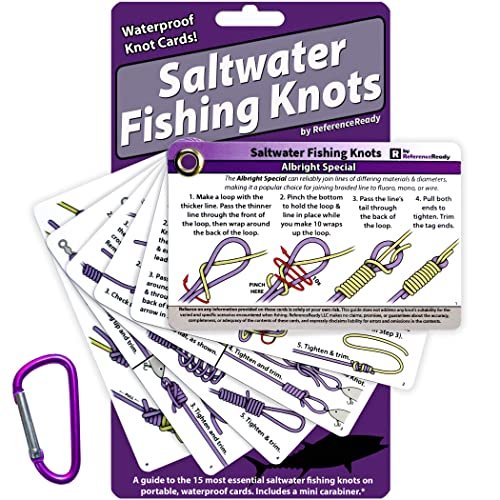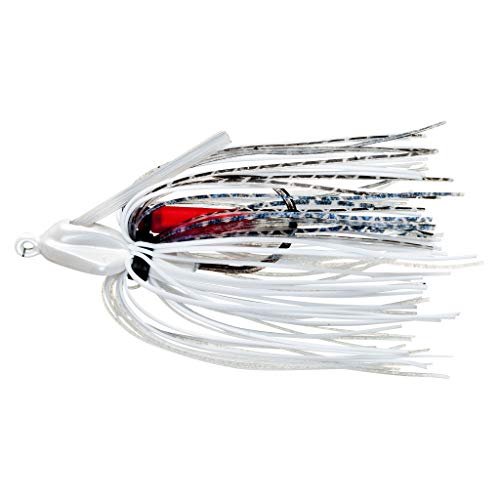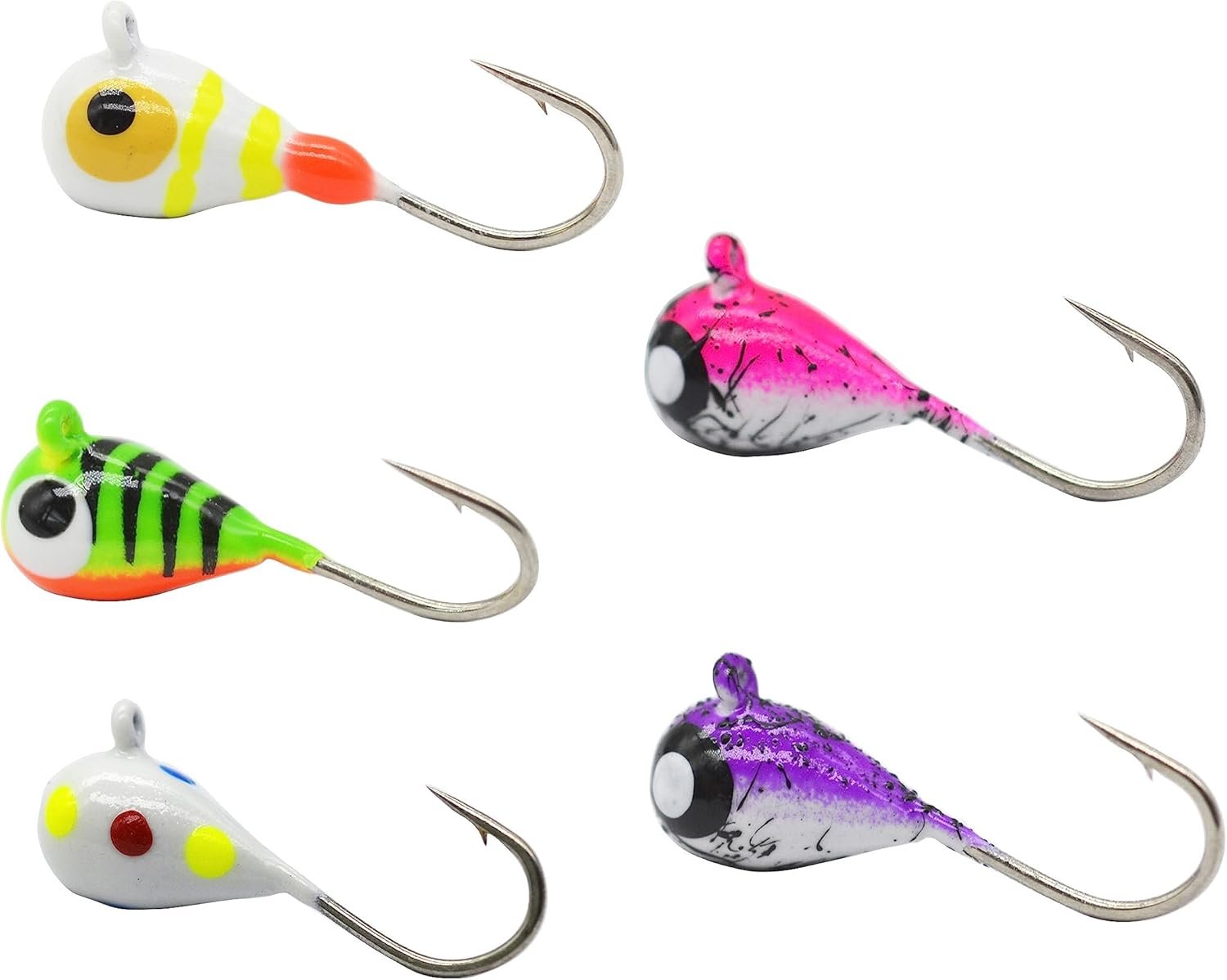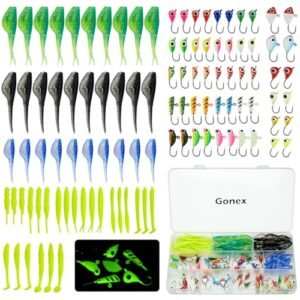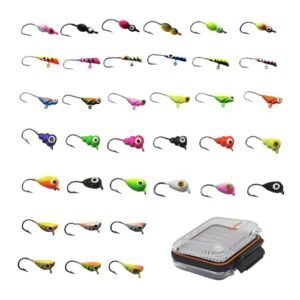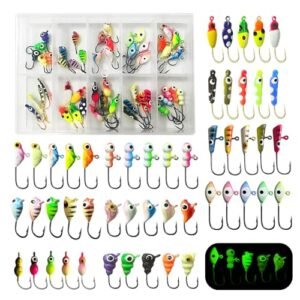Jigging rods are essential for anglers targeting species like tuna, grouper, and snapper. These rods are typically shorter and sturdier, providing the leverage needed to handle powerful fish. They feature fast action tips for quick hook sets and strong backbones to lift heavy catches.
Lightweight materials like graphite and composite are commonly used, ensuring durability without compromising sensitivity. Choosing the right jigging rod can significantly enhance your fishing experience, making it easier to detect subtle bites and effectively fight large fish. Investing in a quality jigging rod is crucial for any serious angler aiming for success in deep-sea fishing adventures.
Introduction To Jigging Rods
Jigging rods are special fishing tools. They are designed to catch fish with jigs. Jigs are lures with a lead sinker and a hook. They are covered with soft materials or feathers. These rods are essential for modern anglers.
Brief History Of Jigging
The history of jigging goes back hundreds of years. People used simple rods and hooks. They added weights to the hooks. This made the hook sink faster. Jigging became popular in the 20th century.
Fishing communities in Japan and the United States used jigging techniques. They developed better rods and lures. Over time, technology improved jigging rods. Today, they are light and strong.
Importance In Modern Angling
Modern anglers love jigging rods. They are versatile and effective. Jigging rods help anglers catch a variety of fish. They work well in deep and shallow waters.
Jigging rods are made of high-quality materials. They are durable and flexible. Anglers use them in both saltwater and freshwater. These rods are perfect for catching big fish. They can handle strong fish easily.
| Feature | Benefit |
|---|---|
| Lightweight | Easy to handle |
| Flexible | Reduces strain |
| Durable | Long-lasting |
| High Sensitivity | Better bite detection |
Jigging rods are also great for sport fishing. Anglers use them in competitions. They help catch fish quickly and efficiently. Jigging techniques are simple to learn. Even kids can start jigging with the right rod.
Key Features Of A Quality Jigging Rod
Choosing the right jigging rod can make or break your fishing experience. The rod’s material, length, action, power ratings, and line weight all play crucial roles. Understanding these features will help you pick the perfect jigging rod for your needs.
Material And Construction
A quality jigging rod is made from high-quality materials. Common materials include graphite, fiberglass, and carbon fiber. Each has its benefits:
- Graphite: Lightweight, sensitive, and strong.
- Fiberglass: Durable and flexible, ideal for heavy-duty fishing.
- Carbon Fiber: Extremely strong and light, best for long fishing sessions.
Construction is also crucial. Look for rods with reinforced joints and guides. This ensures durability and performance.
Rod Length And Action
Rod length affects your casting distance and control. Short rods (5-6 feet) offer better control but shorter casts. Long rods (7-8 feet) provide longer casts but less control. Choose based on your fishing environment.
Action refers to where the rod bends. Fast action rods bend near the tip, offering quick hook sets. Medium action rods bend in the middle, providing a balance of power and flexibility. Slow action rods bend throughout, ideal for delicate presentations.
Power Ratings And Line Weight
Power ratings indicate the rod’s strength. They range from ultra-light to heavy. Choose a power rating based on the size of the fish you target.
| Power Rating | Suitable Fish Size |
|---|---|
| Ultra-Light | Small fish like panfish |
| Light | Medium-sized fish like trout |
| Medium | Average-sized fish like bass |
| Heavy | Large fish like pike |
Line weight is the recommended range of line strength for the rod. Match the line weight to the power rating for optimal performance.
Understanding these key features will help you choose the perfect jigging rod. A quality rod enhances your fishing experience, making each trip more enjoyable.
Types Of Jigging Rods
Jigging rods are essential tools for anglers who love jigging. Understanding the types of jigging rods can help you choose the best one for your fishing needs. Below, we explore the different types of jigging rods available.
Slow Pitch Rods
Slow pitch rods are designed for a specific jigging style. They are flexible and allow for slow, rhythmic movements. This type of rod is perfect for targeting bottom-dwelling fish. The flexibility of slow pitch rods helps in mimicking the movement of injured prey.
- Ideal for deep-sea fishing
- Suitable for larger, heavier jigs
- Great for catching grouper and snapper
Fast Jigging Rods
Fast jigging rods are built for speed and power. They are stiffer and allow for quick movements. These rods are best for targeting fast-swimming fish. The stiffness of fast jigging rods helps in making rapid, vertical motions.
- Perfect for pelagic species
- Works well with lighter jigs
- Effective for catching tuna and mackerel
Light Jigging Rods
Light jigging rods are versatile and easy to handle. They are designed for lighter jigs and smaller fish. These rods offer a balance between sensitivity and strength. Light jigging rods are great for inshore fishing.
- Best for shallow waters
- Ideal for beginners
- Perfect for catching bass and trout
Each type of jigging rod has its unique features and benefits. Choose the one that fits your fishing style and target species.
Selecting The Right Jigging Rod
Choosing the perfect jigging rod can make or break your fishing experience. The right rod helps you catch more fish and makes the trip more enjoyable. Here are key factors to consider:
Species Targeting
Different fish species require different rod strengths. For larger species, use a rod with higher power. Smaller species need a lighter rod. A table can help:
| Fish Species | Rod Power |
|---|---|
| Small Fish (e.g., Panfish) | Light |
| Medium Fish (e.g., Bass) | Medium |
| Large Fish (e.g., Tuna) | Heavy |
Water Conditions
The water conditions greatly impact your rod choice. In calm waters, lighter rods work well. In rough waters, you need a stronger rod.
- Calm Waters: Use lighter rods for better sensitivity.
- Rough Waters: Opt for stronger rods to withstand the waves.
Jig Weight Compatibility
Ensure your rod matches the weight of your jigs. Using the wrong rod can lead to poor performance.
- Check the rod’s weight rating.
- Match it with your jig’s weight.
- Test the setup to ensure balance.
Matching the jig weight ensures better control and efficiency.
Reel And Line Recommendations
Choosing the right reel and line for your jigging rod can make a big difference in your fishing experience. In this section, we will guide you through the best reel and line options to pair with your jigging rod. This will help you get the most out of your fishing trips.
Matching Reels To Your Rod
When selecting a reel, consider the power and action of your jigging rod. Heavier rods need stronger reels. Lighter rods pair well with lighter reels. Always match the reel size to the rod’s weight class.
For light jigging rods, use reels in the 2000-3000 size range. These reels are lightweight and easy to handle. For medium jigging rods, choose reels in the 4000-5000 size range. These provide more power and line capacity. For heavy jigging rods, opt for reels in the 6000-8000 size range. These reels handle larger fish and more challenging conditions.
Braid Vs. Mono: Line Choices
Choosing the right line is crucial. You have two main options: braided line and monofilament line. Each has its own benefits.
Braided line is strong and has a thin diameter. This allows for more line on the reel. It also has no stretch, providing better sensitivity. This helps detect bites faster. Use braided line for deep-water jigging.
Monofilament line is more flexible and has some stretch. This makes it more forgiving. It is also easier to handle and tie knots with. Monofilament is a good choice for shallow-water jigging.
Here is a table to help you decide between braided and monofilament line: Type of LineBenefitsBest UseBraided LineStrong, Thin Diameter, No StretchDeep-Water JiggingMonofilament LineFlexible, Forgiving, Easy to HandleShallow-Water Jigging
In summary, match your reel to your rod’s weight class. Choose braided line for deep-water and monofilament for shallow-water. This way, you will have the best setup for your jigging rod.
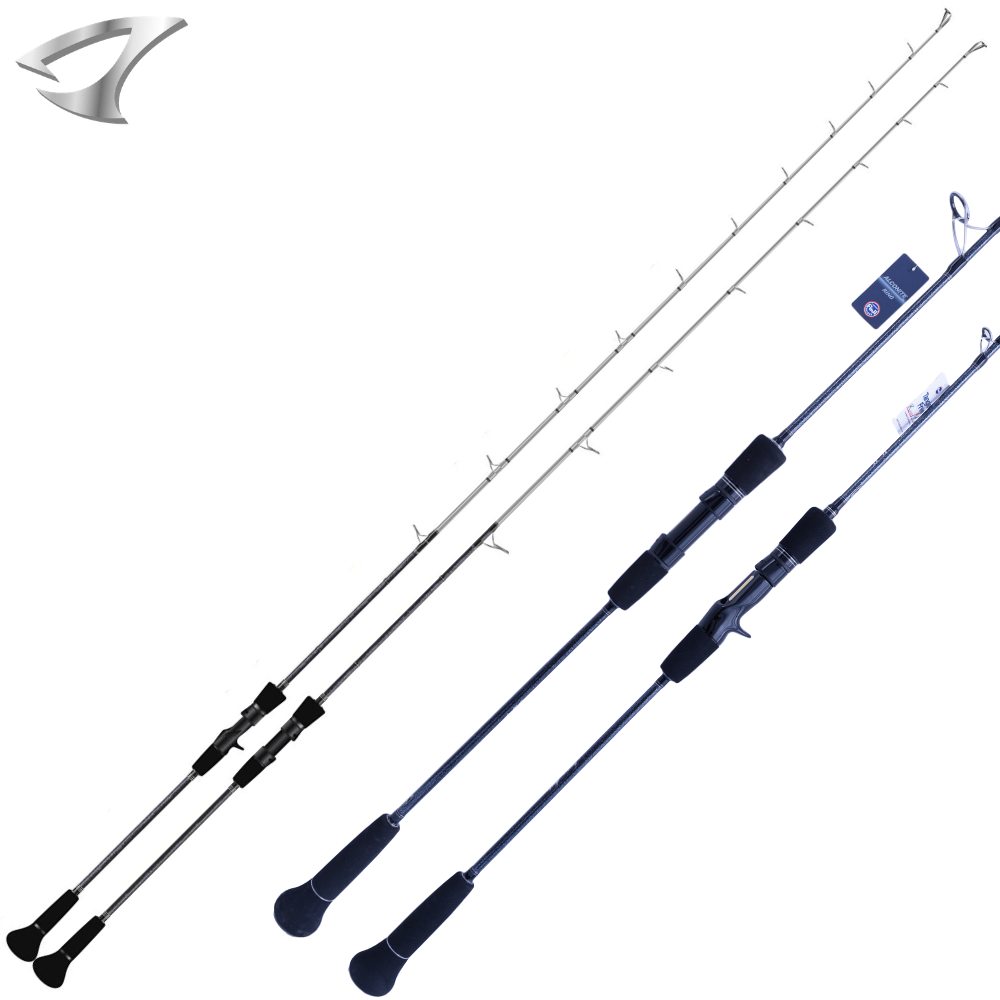
Essential Jigging Techniques
Jigging is a popular fishing technique that requires skill and the right equipment. Jigging rods play a crucial role in this method. Below are some essential jigging techniques that will help you get the most out of your jigging rod.
Mechanical Jigging
Mechanical Jigging is a technique where the angler uses a steady, rhythmic motion. This method involves lifting the rod tip and then letting it drop. It mimics the movement of an injured fish. This technique is effective for catching a variety of fish.
- Lift the rod tip about 1-2 feet.
- Pause briefly.
- Drop the rod tip back down.
- Repeat the motion consistently.
Using a heavy jig works best for mechanical jigging. The steady motion attracts fish by imitating a wounded prey.
Slow Pitch Jigging
Slow Pitch Jigging is a more delicate technique. It involves subtle rod movements to make the jig flutter. This technique is ideal for targeting bottom-dwelling fish. It allows the jig to stay in the strike zone longer.
- Lift the rod tip slowly.
- Allow the jig to flutter down.
- Pause for a moment.
- Repeat the slow lift and flutter.
Using lighter jigs works best for slow pitch jigging. This technique is effective in both shallow and deep waters.
Flutter Jigging
Flutter Jigging involves quick, erratic movements. This technique makes the jig move unpredictably. It mimics a fleeing baitfish. Flutter jigging is excellent for catching fast-moving predators.
| Step | Action |
|---|---|
| 1 | Quickly lift the rod tip. |
| 2 | Allow the jig to fall freely. |
| 3 | Repeat the quick lift and drop. |
Using medium-weight jigs works best for flutter jigging. This technique creates erratic movements that attract aggressive fish.
Jig Selection And Usage
Choosing the right jig can make a huge difference in your fishing success. It is important to understand the different types of jigs, their colors, sizes, and how to properly attach them to your line. This section will guide you through these essential aspects.
Types Of Jigs
There are various types of jigs available, each designed for different fishing conditions. Here are a few popular ones:
- Football Jigs: Great for rocky bottoms. They mimic crawfish.
- Swim Jigs: Ideal for fishing in vegetation. They resemble small fish.
- Flipping Jigs: Best for heavy cover. They have a strong hook.
- Bladed Jigs: Create vibrations. Useful in murky waters.
Color And Size Considerations
Choosing the right color and size of the jig is crucial for attracting fish. Here are some tips:
- Water Clarity: Use natural colors in clear water. Bright colors work in murky water.
- Size: Smaller jigs are good for finicky fish. Larger jigs attract bigger fish.
- Weather: Darker colors work on cloudy days. Brighter colors are better for sunny days.
Attaching Jigs To Your Line
Properly attaching your jig to the line ensures better control and presentation. Follow these steps:
- Select the right knot: Palomar knot is strong and reliable.
- Thread the line: Pass the line through the jig eye twice.
- Tie the knot: Make an overhand knot, then pass the jig through the loop.
- Tighten: Moisten the line and pull both ends to tighten the knot.
Below is a simple table summarizing the knot tying process:
| Step | Description |
|---|---|
| 1 | Select the right knot (Palomar knot). |
| 2 | Thread the line through the jig eye twice. |
| 3 | Tie an overhand knot, pass jig through the loop. |
| 4 | Moisten the line and pull ends to tighten. |
Maintenance And Care For Jigging Rods
Proper maintenance and care extend the life of your jigging rod. This guide helps you keep your rod in top condition. Follow these steps to ensure your equipment stays in peak performance.
Cleaning After Saltwater Use
Saltwater can damage your jigging rod. Always rinse your rod with fresh water after each use. Use a soft cloth to wipe it down. Pay special attention to the guides and reel seat. These areas often collect salt and debris.
Avoid using harsh chemicals. They can damage the rod’s finish. A mild soap and water solution works best. Rinse thoroughly to remove all soap residue. Dry the rod completely before storing it.
Storage Tips
Store your jigging rod in a cool, dry place. Avoid direct sunlight. UV rays can weaken the rod material over time. Use a rod holder or rack to keep it upright. This prevents bending or warping.
- Keep rods separate to avoid scratches.
- Use rod socks or tubes for added protection.
- Ensure the reel is detached before long-term storage.
Proper storage prolongs the life of your rod and keeps it ready for the next adventure.
Periodic Checks And Repairs
Regularly inspect your jigging rod for damage. Check the guides for cracks or chips. A damaged guide can fray your line. Replace any damaged guides immediately.
Examine the reel seat. Ensure it is tight and free from corrosion. Loose reel seats can affect your casting accuracy. Tighten or replace as needed.
Look for any signs of wear on the rod blank. Small cracks can become bigger problems. If you find any, consider professional repair. This can save your rod from further damage.
Lubricate moving parts such as the reel seat and guides. Use a light oil to keep them moving smoothly. This prevents rust and ensures your rod stays in top condition.
Follow these maintenance tips to keep your jigging rod in excellent shape. Regular care ensures your rod performs well for years to come.
Case Studies: Successful Jigging Expeditions
Jigging rods have revolutionized fishing expeditions, delivering remarkable results. This section delves into case studies of successful jigging expeditions. We will explore notable catches, techniques in action, and gear setups that have led to success.
Notable Catches
Jigging rods have been instrumental in landing some impressive fish. Here are a few notable catches:
- Giant Trevally: Anglers have caught Giant Trevally weighing over 50 kg.
- Yellowfin Tuna: Fishermen reported landing Yellowfin Tuna up to 80 kg.
- Amberjack: Jigging expeditions have yielded Amberjack exceeding 40 kg.
Techniques In Action
Successful jigging requires specific techniques. Here are some methods proven to be effective:
- Vertical Jigging: This technique involves dropping the jig straight down and retrieving it in a vertical motion.
- Speed Jigging: Anglers use fast retrieval speeds to mimic fleeing baitfish.
- Slow Pitch Jigging: Slow, rhythmic jigging creates an enticing movement for fish.
Gear Setups
Having the right gear setup is crucial for a successful jigging expedition. Here are some recommended gear setups:
| Component | Recommendation |
|---|---|
| Rod | Medium to heavy power, fast action |
| Reel | High-speed spinning or baitcasting reel |
| Line | Braided line with a high test strength |
| Leader | Fluorocarbon leader, 1.5 to 2 times the mainline strength |
By utilizing the right gear and techniques, anglers can maximize their success on jigging expeditions.
Enhancing Your Jigging Experience
Jigging is an exciting way to fish, but the right gear can make it even better. Enhancing your jigging experience involves using the right accessories, learning from experts, and joining angling communities. These steps ensure you get the most out of every trip.
Accessories And Gear Upgrades
Using high-quality accessories can dramatically improve your jigging. Consider upgrading your rod and reel for better performance. A sturdy jigging rod and a smooth reel reduce fatigue and make handling large fish easier.
| Accessory | Benefit |
|---|---|
| High-Quality Hooks | Increase your catch rate |
| Durable Line | Prevents line breakage |
| Rod Holders | Provide hands-free convenience |
Don’t forget about comfortable grips for your rod. They make long fishing sessions more enjoyable. Also, investing in a good tackle box keeps your gear organized and easily accessible.
Learning From The Pros
Learning from professional anglers can provide valuable insights. Pros have years of experience and can teach you techniques to improve your jigging. Watch online videos or attend workshops to learn from the best.
- Follow professional anglers on social media
- Read articles and books by fishing experts
- Attend local fishing seminars
These resources can offer tips on gear, bait, and techniques to enhance your skills.
Joining Angling Communities
Joining angling communities can also enhance your jigging experience. These communities are great places to share tips and stories. You can learn about the best fishing spots and get advice on gear.
- Join local fishing clubs
- Participate in online forums
- Attend community fishing events
Being part of a community makes fishing more enjoyable and helps you improve faster.
Frequently Asked Questions
What Kind Of Rod Do You Use For Jigging?
For jigging, use a medium to heavy action rod, 6 to 7 feet long, with fast or extra-fast tip. This ensures sensitivity and strength for deep-water fishing.
What Length Rod For Jig Fishing?
A 6’6” to 7’6” rod is ideal for jig fishing. Opt for a medium-heavy power with fast action for best results.
What Is The Difference Between A Spinning Rod And A Jigging Rod?
A spinning rod is versatile, ideal for casting light lures. A jigging rod is specialized for vertical fishing, handling heavy jigs.
Can You Use A Normal Rod For Jigging?
Yes, you can use a normal rod for jigging, but specialized jigging rods perform better. They offer more sensitivity and strength.
Conclusion
A jigging rod is essential for any serious angler. It enhances precision and boosts your fishing success. Choose the right rod for your needs, and enjoy more productive trips. Don’t forget to consider factors like flexibility, length, and material. Invest in quality, and you’ll see the difference in your catch.


